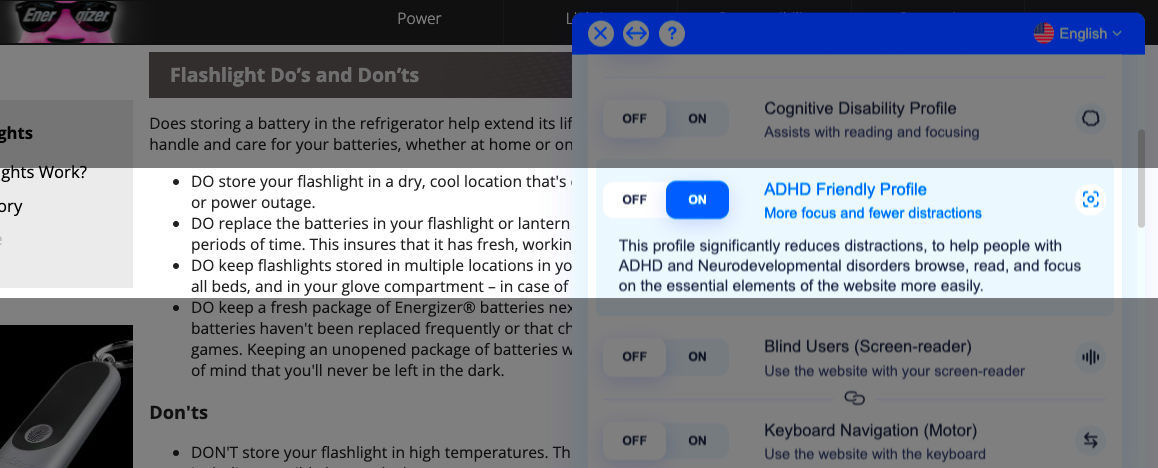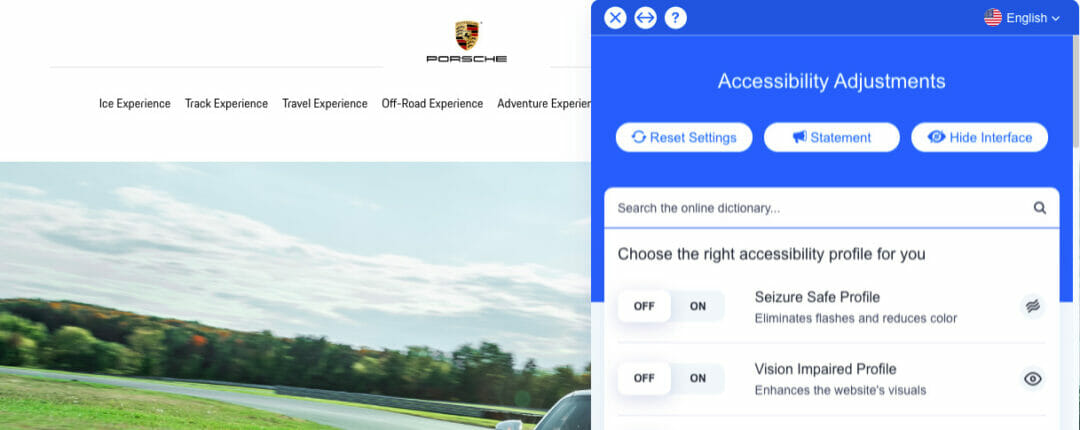The internet has been one of the most significant and fastest technological developments in modern day history, but have you ever stopped to wonder how people with disabilities navigate the internet?
Sadly, out of the 350 million websites in the United States, only a mere two percent are accessible for users with disabilities. People with disabilities make up roughly 20% of the total US population, leaving one in five individuals without proper access to the internet. All accessibility (digital and physical) is a civil right. Companies need to ensure that their websites are accessible for all users, and fortunately, it isn’t too difficult to make happen (more on this later).
What does an accessible website really mean? The history of web accessibility
Accessibility was brought into Section 508 of the Rehabilitation Act and Title III of the American with Disabilities Act. Section 508 applies to federal agencies and contractors, whereas Title III of the American with Disabilities Act pertains to private businesses.
Section 508 protects the disability community from the discrimination in all sorts of nonphysical areas, including the internet. ADA lawsuits against inaccessible business websites are on the rise as well.
Keeping a website up-to-date is difficult enough, let alone keeping it accessible as new content flows in. Companies in the past have relied on app plugins or web developers to make their website accessible, which could cost up to thousands of dollars, not to mention, the costs required to upkeep the website’s compliance. Therefore, companies need to be proactive in making the necessary investments to make their online presence ADA-compliant and to invest in its upkeep.
Enter accessiBe’s AI-powered overlay
Over 100,000 websites currently rely on accessiBe‘s automated solution to achieve accessibility. The company uses AI technology to scan their clients’ websites every 24 hours to search for new content that may need to be adjusted, so that they aren’t left with a lengthy stretch of time where they may be vulnerable to lawsuits.
In addition to this key point, their overlay covers a wide range of disabilities – more than are listed in the guidelines recommended by the ADA. These disabilities include seizures, ADHD, cognition disabilities, and dyslexia. Take it from the 100,000+ websites this company has made accessible in just two years, accessiBe’s overlay is a winner and their technology is the future.
As David Shaffer Law states, “In addition to the overlay and widget, accessiBe has captioning services for any audio or video a website wants to host. This approach not only complies with WCAG 2.1 Level AA, but anticipates the changes coming with WCAG 3.0.”
A few quick features of the accessiBe AI-powered overlay
accessiBe’s overlay provides people with disabilities a way to customise their navigational experience according to their personal needs, which is a game changer as even among the same disability there are different needs.

Companies need to understand the types of disabilities that exist and what type of changes would be needed to cater for that disability (hint: you’re going to find that “accessibility” is not, at all, a one-size-fits-all solution).
A few features of the current overlay include:
1. Automatic screen reader adjustments, including:
- Alt attributes;
- State controls;
- ARIA attributes;
- Icons and buttons;
- Roles and landmarks;
- Forms and validations;
- Automatic keyboard navigation.
2. Personal UI and design adjustments – when it comes to content and display, you have the option of different accessibility profiles:
- ADHD-friendly profile – more focus and fewer distractions;
- Cognitive disability profiles – assists with reading and focusing;
- Vision impaired profile – enhances the website visuals;
- Seizure safe profile – eliminates flashes and reduces colour
3. Colour and contrast for the vision impaired – enhances the content’s foreground and background colour contrasts.
4. Live dictionary – provides instant meaning for users with cognitive disabilities who may find it hard to comprehend certain phrases, languages, or slang.
5. Stop animations for epileptics – freeze all animations, gifs, and flashing images.
6. Reading Mode for cognitive disorders – puts a web page in a text only, reading-focused mode.
7. Quick Navigation for the motor impaired – allows users to reach any important page with a single click.
Accessibility is a must in 2021. There is no excuse not to have an accessible website. Companies should look into what works for them when making their website accessible, and check out accessiBe as an option to keep things business-friendly, safe, and affordable. The future of websites is here.










